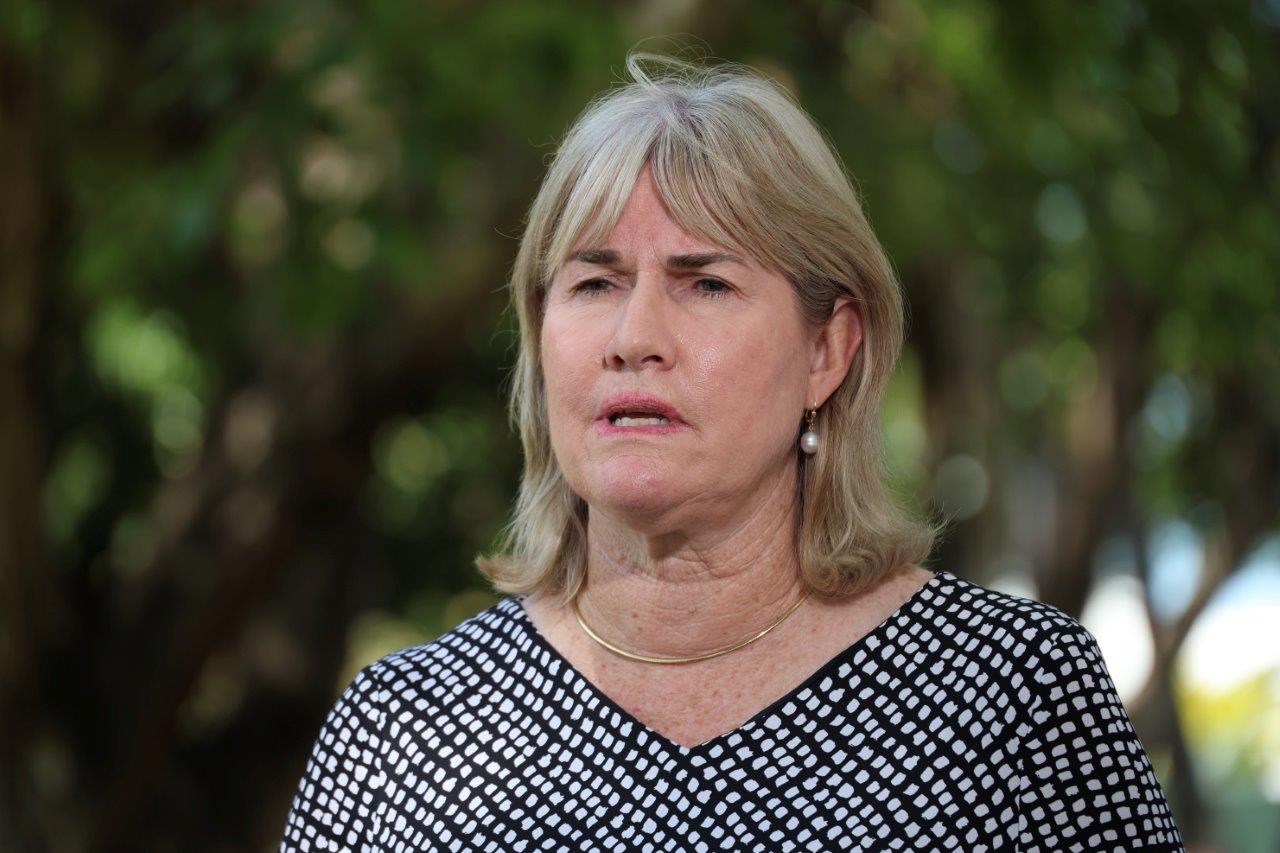Chief Minister and Treasurer Eva Lawler has forecast a deficit of $410 million for 2024/25, but surpluses across the forward estimates, rising to $231 million by 2027/28.
Lawler says the financial blueprint is a commonsense budget “that is all about lowering crime, improving community safety and getting Territorians working”.
“This is not a glamorous budget,” she said in her speech to parliament on Tuesday.
The chief minister said the budget’s measures, two months out from the Territory’s election, include $1.2 billion for public order and safety and $723 million to “build safer, fairer and more resilient communities”.
There’s an extra $570 million for the NT Police Force over the next five years, which will put 200 more officers on the beat, upgrade operational infrastructure and employ 71 extra support staff.
“This is the largest-ever boost in funding for the NT Police Force in the Territory’s history,” Lawler said.
The measure includes $70 million “to reduce the scourge of domestic, family and sexual violence” and $170 million to pay for the growing prisoner population, build two temporary prisons, upgrade the Alice Springs Correctional Centre and establish a specialist domestic violence offenders custody facility.
More than $44 million has been earmarked for residential youth justice facilities at Darwin, Katherine, Alice Springs and Tennant Creek.
The funding will provide for live‑in facilities to ensure court sentences and orders are enforced, while offenders are provided training and education services.
“We will ensure that kids who commit crimes answer for their actions – and that they complete training while in custody so they can turn their lives around,” Ms Lawler said.
Growing crime rates and anti-social behaviour have been major issues in Territory communities for some time but the issue drew national attention early in 2024 with a series of wild brawls in Alice Springs.
The budget includes a $1.34 billion education services package with extra cash to improve skills and learning in schools, funding for apprenticeships and traineeships and money to upgrade classrooms.
But the North Australian Aboriginal Justice Agency says more police and prisons are not the answer to tackling crime in the NT, and could even make the problem worse.
“More police and prisons are a band-aid solution that won’t improve outcomes for the individual or the broader community,” Principal Legal Officer Jared Sharp said on Wednesday.
The agency said the NT was facing significant law and order challenges and evidence-based solutions were needed.
These include intensive support programs, diversion, education, and related services, “not knee-jerk reactions”.
Sharp was critical of the lack of extra funding in the budget for courts and legal services, despite both “struggling to meet increasing demand”.
“History and common sense tell us that if we put more police on the streets and increase prison capacity, more people are going to come into contact with the criminal justice system,” he said.
The peak body for the community sector, the NT Council of Social Services, echoed the concerns, saying there was no additional community sector funding in the budget for solutions proven to benefit community safety.
These include increased investment in drug and alcohol programs, mental health services, community youth programs and workforce education in these areas.
“It provides a false sense of security to Territorians, that community safety will be achieved only by more police and prisons,” chief executive Sally Sievers said.
Meanwhile, emergency curfews will be easier to impose on NT communities in a bid to quickly crackdown on crime and anti-social behaviour in the Top End, with “groundbreaking” legislation, to be introduced to the territory’s parliament today.
“We’ve seen the benefits that the Alice Springs youth curfew have delivered to residents and businesses,” Lawler said.
“We want to have the option to use curfews as a circuit-breaker where they are needed.”
The NT Police Force will administer the new curfew laws with any use of the tactic depending on operational assessments made by police.















